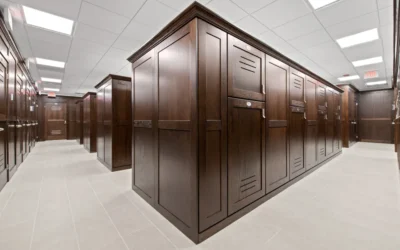Street rates are down for self-storage properties. Will a slowdown in new deliveries provide relief?
Yardi Matrix reports that street rates dropped in about 75 percent of the markets it tracks, according to its December National Self Storage Report. Street rates for standard 10×10 non-climate-controlled units fell 1.7 percent year-over-year in November and 3.3 percent YOY for climate-controlled units of the same size, the report said.
The share of self-storage projects in various stages of development accounts for 9 percent of total self-storage stock, according to Yardi Matrix.
The slow down is coming, but not quite yet
JLL Managing Director Brian Somoza said self-storage construction deliveries for the first quarter of 2020 likely will be similar to what the industry saw in Q1 2019.
“Completions should start to slow toward the second half of the year, but street rates will continue to be depressed for a period after that while operators compete for occupancy,” Somoza said. Somoza, based in Los Angeles, is part of the national self-storage real estate brokerage team at JLL.
Even with rates depressed, revenue up for REITs
Still, even with street rates declining, the country’s five national self-storage REITs all reported an increase in revenue during the third quarter of 2019, according to JLL’s Q3 self-storage REIT report.
National Storage Affiliates saw the biggest bump, up 3.7 percent increase in revenue, even though the REIT says about 40 percent of its portfolio is impacted by new supply within a 5-mile radius.
Public Storage saw the smallest revenue increase of the Big Five publicly traded national REITs, 1.1 percent. PSA said its move-in rental rates were down about 5 percent.
Core cities see fewer impacts on rental rates
Some relief on street rates should be on the way as new deliveries begin to slow, although it may be much later in the year.
A record number of self-storage properties were delivered in 2018 and 2019. Many of the self-storage properties that are being delivered this year were likely in the pipeline two to three years ago, Somoza said.
“Although new supply exists; core markets have (been) impacted to a lesser degree than secondary and tertiary markets,” Somoza said.
That’s because self-storage facilities in core markets continue to maintain their occupancy levels, he said.
“West Coast markets have remained strong in terms of occupancy and rental rates. Oversupplied markets in Texas, Colorado, Florida and Carolinas continue to see pressure on rental rates as other markets begin to slowly experience some recovery.”
On demand storage adding pressure too
It isn’t just new construction putting pressure on prices in major cities—but on demand storage may be taking its toll as well.
Lior Rachmany, CEO of Brooklyn, NY-based Dumbo Moving and Storage, said the proliferation of on-demand storage startups have been a challenge for the company, which specializes in whole house moves and which stores goods in warehouse space, not in consumer-accessed self storage.
Still, Dumbo finds itself competing with multiple on-demand storage companies on smaller moves where a consumer may want just a few bins picked up and stored or a just portion of its household goods stored, he said.
“We are always looking for more affordable pricing options,” Rachmany said.
The company has always offered the first month free for storage, but now it is being more deliberate about making that benefit part of its advertising campaign due to increased competition, he said. Dumbo provides storage in New York City, New Jersey, Miami, Los Angeles and San Francisco.







